Bread Baking for Beginners
Posted by Amy on Apr 26th 2023
So you’ve decided you want to start baking bread, but you’re not really sure where to begin. Good news! You’ve come to the right place. In this post, we’ll break down bread baking into manageable steps, easily understood by even the newest baker. We hope our guidance will help you start baking with confidence and create some delicious results!
The “Why” Behind Our Recommendations
While there are a vast array of bread recipes out there, we’ve selected three recipes that are ideal for beginning bread bakers. Here’s why we advise you to start with one of these:
1. You can make each one using what you probably already own: A medium to large mixing bowl, a baking sheet or Dutch oven (depending on the recipe), and measuring cups and spoons. No need to buy any fancy equipment.
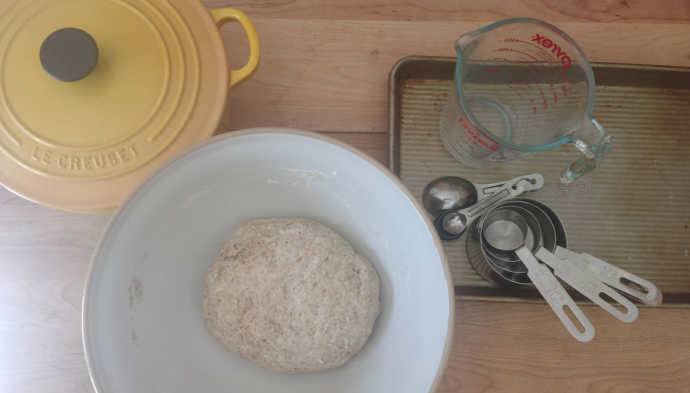
2. Each of these recipes features detailed directions, along with pictures (or even video) to walk you through the process visually.
3. We’ve tested these recipes ourselves, so we’re confident they are a good fit for beginners. We know how frustrating it is to try a new recipe only to find it is missing ingredients or steps, or doesn’t produce good results.
Our Recommended Recipes: Focaccia
First up is a focaccia recipe from Samin Nosrat. Focaccia is a flat bread made with yeast and olive oil, and it hails from Liguria in Italy. Use it as sandwich bread, top it with sauce and vegetables, or dip it in hummus or a mixture of olive oil and balsamic vinegar.
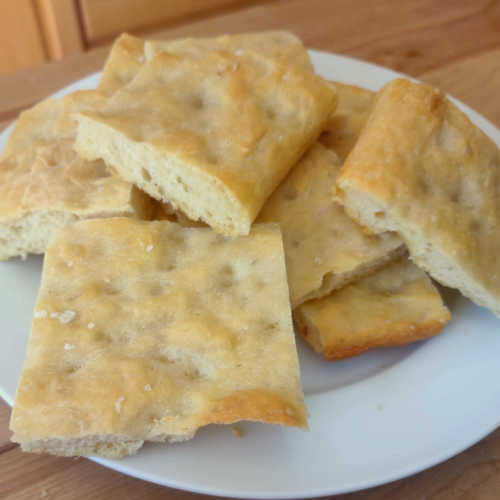
This recipe can be found on Samin Nosrat’s website, and it’s also been featured on her Netflix show, Salt Fat Acid Heat. While the recipe in the show differs slightly from the one on her site, we recommend checking out both for some great tips about mixing and handling the dough.
Because the dough needs to rest 12-14 hours between mixing and baking, we suggest starting this recipe on Saturday evening, so you can have delicious focaccia for breakfast Sunday morning.
Our Recommended Recipes: Hearth Bread
When a recipe is featured on the back of a bag of King Arthur Flour, we just know it’s going to be a winner. That’s why we’d be remiss if we failed to include King Arthur Baking’s Hearth Bread. Hearth bread is baked from simple ingredients on a baking sheet.
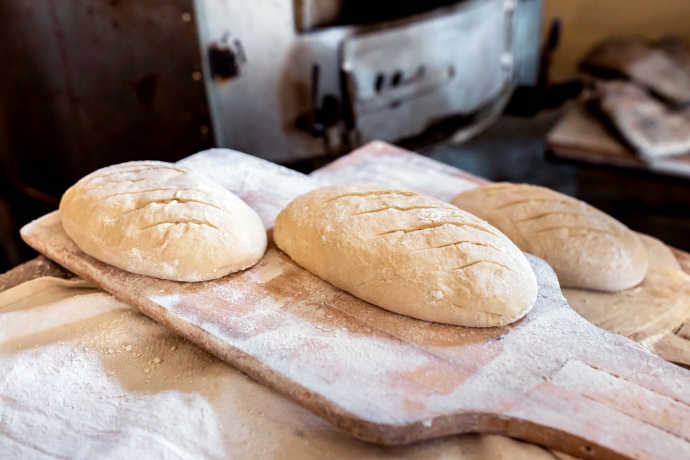
This recipe is designed especially for newbies. We love the gifs included at each stage of the recipe to demonstrate exactly how to knead, shape, and score the dough. This recipe produces two big loaves of hearth bread, ostensibly to “give one to a friend.” But it’s so tasty and versatile, we prefer to freeze one and save it for later.
Our Recommended Recipes: Rye Bread
We’ve tried our fair share of no-knead bread recipes over the years, and the results can be hit or miss. Some produce a crust so thick it hurts the roof of your mouth. Others just don’t offer enough flavor. So we’re picky about recommending no-knead bread recipes.
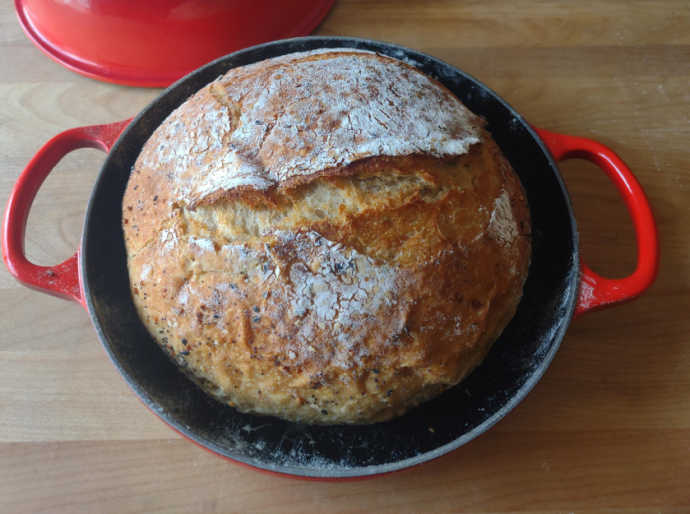
This recipe from Joy the Baker produced a loaf that is a definite hit. While she designed her Easy No-Knead Everything Rye Bread to celebrate the launch of Le Creuset’s Bread Oven, you can bake this recipe using any Dutch oven. In her blog post, she will guide you through the whole process, with photos at each stage.
Final Tips
Read ahead. We always recommend completely reading through a recipe at least once before starting. This advice is especially applicable to bread baking, which often includes a series of active and inactive steps.
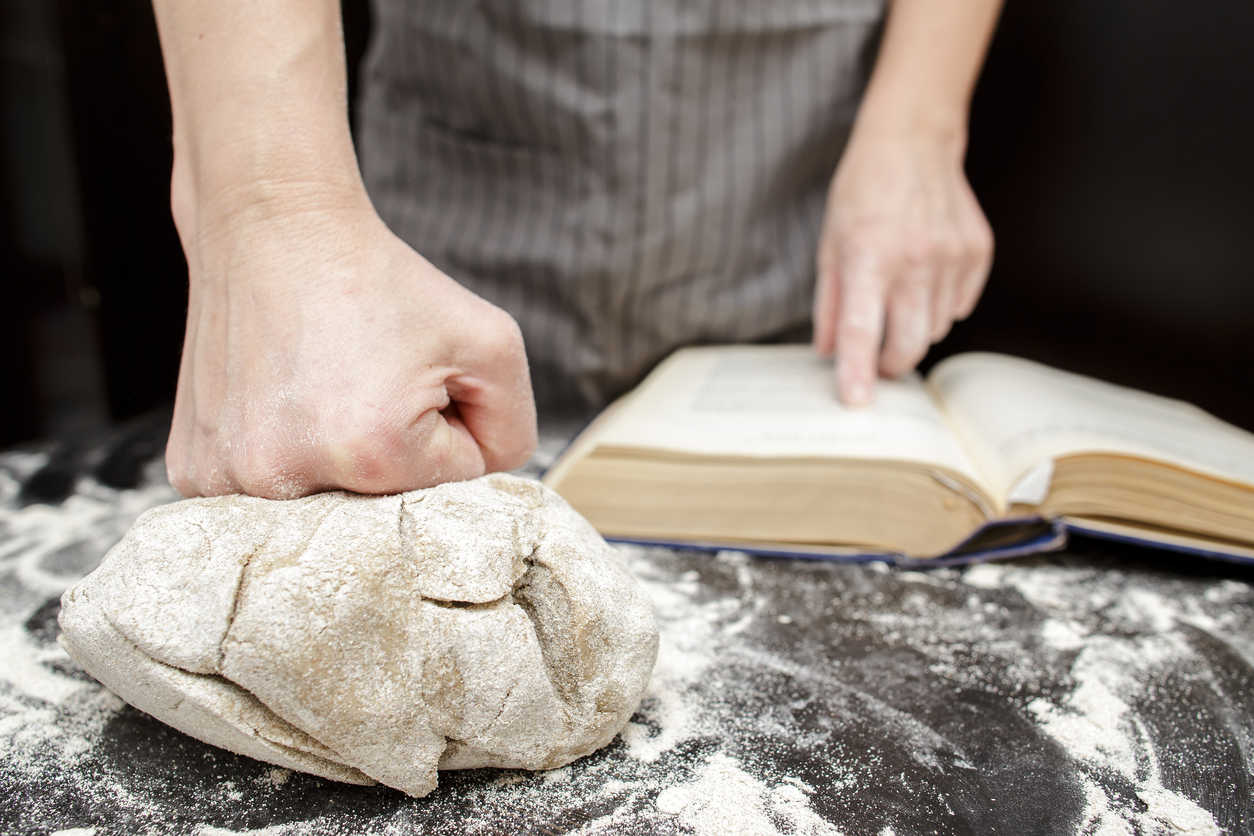
Follow the recipe. If the recipe calls for instant yeast, use instant yeast. If the recipe calls for room temperature water, use room temperature water. Baking is a science, and the success of your bread depends on following the recipe precisely.
Take your time. Don’t attempt to rush the process. Knead your dough for the recommended amount of time. Let your dough rest for as long as the recipe says you should. These active and inactive steps are crucial to producing good results.
Mistakes will happen. That’s okay! You may not turn out bakery-worthy loaves every time you bake. Because baking is a science, there are variables at play which you can’t always control. Maybe the humidity was too high, your yeast was too old, or your oven was too cold. Or maybe your dough was just feeling feisty.
We hope we’ve inspired you to give bread baking a try. We’d love to see the results.

